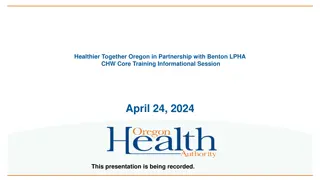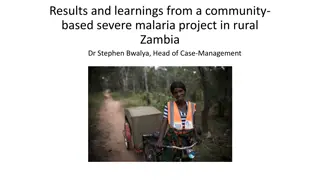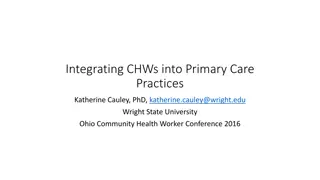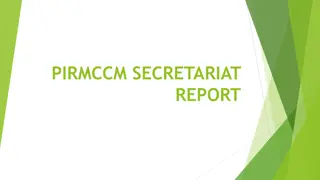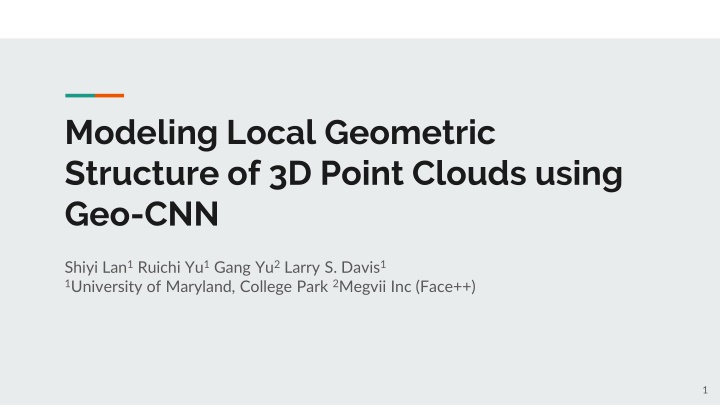
Local Geometric Structure Modeling in 3D Point Clouds with Geo-CNN
Explore how Geo-CNN introduces GeoConv to extract local features and solve geometric structure issues in 3D point clouds. Discover the key contributions, problems addressed, and solutions provided by this innovative approach, along with techniques for modeling edge features and data augmentation.
Download Presentation

Please find below an Image/Link to download the presentation.
The content on the website is provided AS IS for your information and personal use only. It may not be sold, licensed, or shared on other websites without obtaining consent from the author. If you encounter any issues during the download, it is possible that the publisher has removed the file from their server.
You are allowed to download the files provided on this website for personal or commercial use, subject to the condition that they are used lawfully. All files are the property of their respective owners.
The content on the website is provided AS IS for your information and personal use only. It may not be sold, licensed, or shared on other websites without obtaining consent from the author.
E N D
Presentation Transcript
Modeling Local Geometric Structure of 3D Point Clouds using Geo-CNN Shiyi Lan1Ruichi Yu1Gang Yu2Larry S. Davis1 1University of Maryland, College Park 2Megvii Inc (Face++) 1
Key Contribution Propose a generic operation called GeoConv Extract more local features than the-state-of-art Enable to apply data augmentation on feature-level 2
Whats the problem they want to solve? The previous methods to extract the local features ignore the geometric structure The closest related work, EdgeConv, extracts edge features among k-NN points But they ignore the direction of the vector 3
How do they solve it? GeoConv applied to each points and its local spherical neighborhood with a radius Decompose each vectors to three orthogonal bases and weights Aggregate those bases with the weights to get the edge feature for each points 4
General Formula of GeoConv Function to model edge featrues 5
Modeling Edge Features (Key Component of Geo-CNN) Straightforward way apply NN or MLP on edge vector May suffer overfitting or project the edge features into some high dimensional space and loss the Euclidean geometric structure Norm of the edge vector represents the weight on that direction In practice, they use six bases They use three orthogonal bases (x, y, z) to represent the edge vector 6
Multi-view Data Augmentation Input level Rotate the point cloud as data augmentation Feature level approximate rotation by only changing the aggregation model 8
Classification Baseline aggregate the edge features from different points by taking average use a single weight matrix instead of separate weights on each directions to extract the edge features 9
Can we model local geometry by directly learning from 3D coordinates? Use FC to learn Euclidean geometry structure on every layer of baseline model Learn the aggregation coefficients directly, not by function 10
Does the performance gain of GeoConv come from increasing model complexity? 11
Multi-view Augmentation Input-level leads to performance degradation on both baseline and Geo-CNN Large variance among different views? Input-level vs. Feature-level cannot be properly learned with a single compact model 12
Connect to My Work A better way to extract the local features to overcome the loss on the local details GeoConv is an operation possible to integrate with exist models 13


